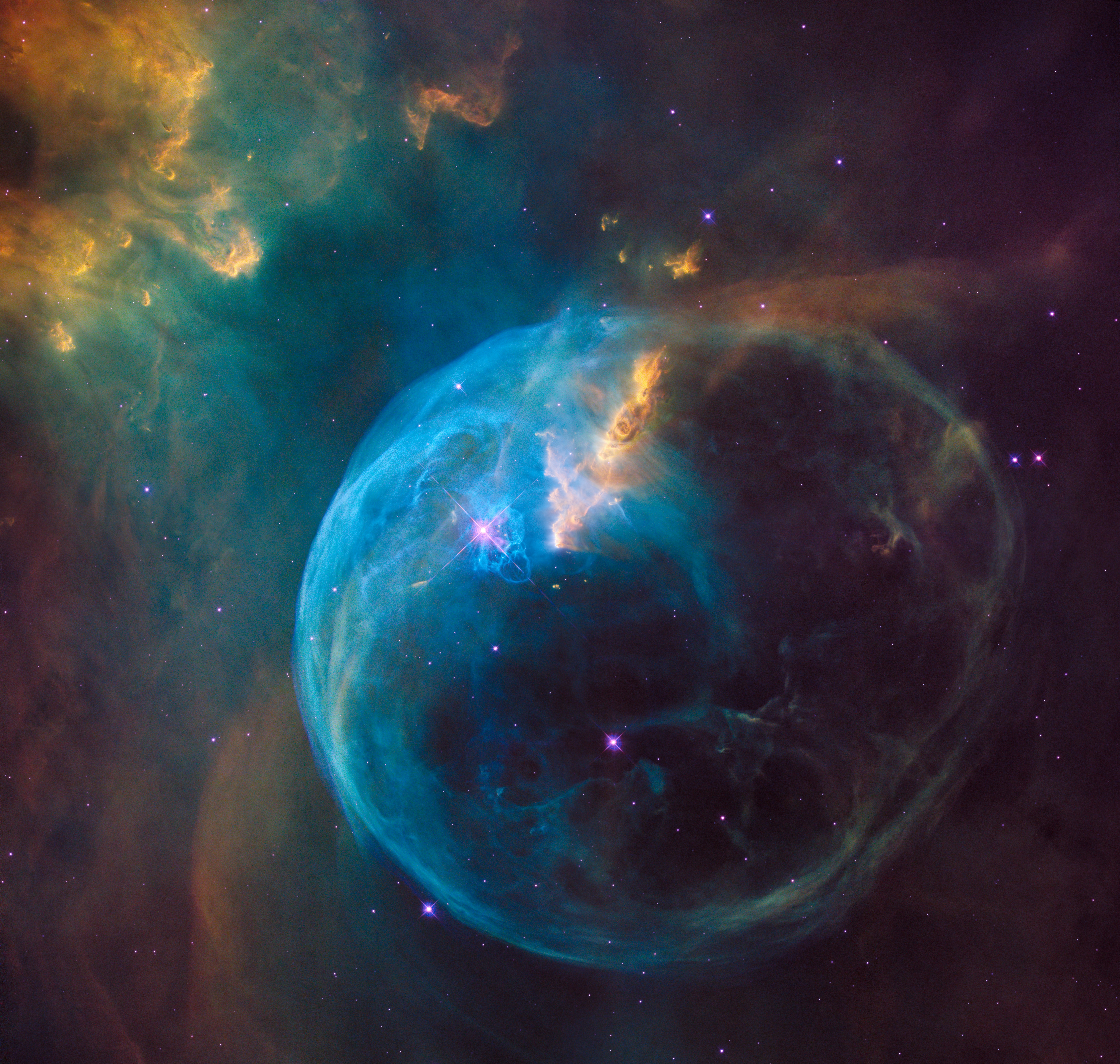The Layered Cosmos: Toward a Unified Theory of Everything

The Layered Cosmos: Toward a Unified Theory of Everything
How Entropy, Information, and Quantum Geometry Might Explain Reality
Image: Galaxy Cluster (Credit: NASA/ESA)
Introduction
What if the universe’s complexity—galaxies, atoms, life itself—emerges from simple rules, like ink diffusing in water? Modern physics hints that reality might be a layered tapestry, woven from entropy, information, and geometry. In this post, we explore a bold framework that stitches quantum mechanics, relativity, and information theory into a single narrative.
Layer 1: The Primordial Soup (Diffusion)
Imagine a scalar field ( U(x,t) ) spreading smoothly across space:
$$
\frac{\partial U}{\partial t} = D \nabla^2 U
$$
This "toy universe" obeys the diffusion equation—the same law that describes heat spreading or dye mixing in water. It’s a universe of increasing entropy, drifting toward bland equilibrium.
Key Insight: Even here, the seeds of time’s arrow are planted. Entropy isn’t just disorder; it’s the universe’s way of forgetting.
Layer 2: Patterns in the Chaos (Reaction-Diffusion)
Add nonlinearity, and magic happens:
$$
\frac{\partial U}{\partial t} = D \nabla^2 U -\alpha U + \beta U^2 - \gamma U^3
$$
The cubic term ( \gamma U^3 ) stabilizes runaway growth, while ( \beta U^2 ) fuels self-organization. This is the physics of zebra stripes, coral reefs, and—perhaps—galaxy clusters.
Cosmic Example: After the Big Bang, slight density fluctuations (quantum noise?) amplified into galactic filaments via similar math.
Layer 3: The Universe Is a Computer (Information Fields)
Replace ( U ) with an information density ( I(x,t) ), governed by:
$$
\mathcal{U}[I] = \int \left( \nabla I \cdot \nabla I - V(I) \right) d^4x
$$
This isn’t just philosophy—it’s a mathematical leap. Information becomes a physical field, with gradients and potentials. Think of it as the "source code" of reality.
Radical Idea: Spacetime itself could emerge from entangled information, like a 3D printer tracing paths in data.
Layer 4: Quantum Forces (Standard Model)
Matter and forces arise from quantized fields:
$$
\mathcal{L}{\text{SM}} = \bar{\psi}(i \gamma^\mu D\mu - m)\psi - \frac{1}{4}F_{\mu\nu}F^{\mu\nu} + \dots
$$
Electrons (( \psi )) and photons (( A_\mu )) dance to the tune of gauge symmetries (SU(3)×SU(2)×U(1)). But where do these symmetries come from?
Speculation: Symmetries might be conserved "information currents" from Layer 3.
Layer 5: Gravity as Geometry (General Relativity)
Einstein’s equations encode gravity in spacetime curvature:
$$
G_{\mu\nu} + \Lambda g_{\mu\nu} = \frac{8\pi G}{c^4} T_{\mu\nu}
$$
But GR clashes with quantum mechanics near singularities (black holes, Big Bang).
Unification Hint: If ( g_{\mu\nu} ) couples to information density ( I ), gravity could be entropy’s gradient in disguise.
Layer 6: Bridging the Divide (String Theory & LQG)
- String Theory: Particles are vibrating strings in 10D spacetime.
- Loop Quantum Gravity: Spacetime is a network of quantized "spin foam."
Both frameworks struggle to match experiments, but they share a theme: discreteness. Could the universe’s pixels be Planck-scale information bits?
Layer 7: The Theory of Everything (TOE)
A meta-equation unites all layers:
$$
\mathcal{I}{\text{Total}} = \int \mathcal{L}{\text{QG+QFT}}[I, g, \psi, A_\mu] , d^n x
$$
Here, ( I ) (information) shapes ( g_{\mu\nu} ) (spacetime), which hosts ( \psi, A_\mu ) (matter/forces).
What It Predicts:
- Black holes as information scramblers.
- Quantum entanglement as spacetime glue.
- New physics in extreme gravity (e.g., neutron star mergers).
Challenges & Open Questions
- Time’s Arrow: Diffusion is irreversible; quantum mechanics isn’t. Which is fundamental?
- Symmetry Origins: How do SU(3), SU(2), U(1) emerge from information dynamics?
- Experiments: Can we test holographic principles or quantum gravity?
Conclusion: Reality as a Cosmic Layer Cake
From diffusion to dragons, the universe’s layers hint at a profound truth: complexity is emergent. The TOE won’t be a single "Eureka!" equation—it’ll be a story of how simplicity begets richness through math, symmetry, and information flow.
"The universe is not only stranger than we imagine—it’s stranger than we can imagine."
— J.B.S. Haldane
Further Reading:
